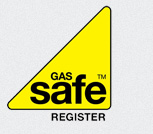Bathtub Refinishing and Its Dangers
Bathtub refinishing is the process of restoring the surface of a bathtub that is damaged or worn to the same condition it was when brand new. It is a process that involves removing the existing enamel finish to make a pores surface that the new synthetic coating of either epoxy or polyurethane can bond with effectively. This is a cost effective alternative to replacing the bathtub, however it does have its risks as it involves the use of hazardous chemicals such as methylene chloride, isocyanates and acids.
Methylene chloride also known as dichloromethane is a volatile, colourless liquid with a sweet pleasant odour mainly used in industrial processes such as paint stripping, metal cleaning and pharmaceutical manufacturing. The means of exposure to methylene chloride is most commonly inhalation and skin exposure.
Potential Effects of Methylene Chloride on Health
The UK Chemical Hazard Information and Packaging (CHIP) classification (now know as CLP revaluation) of methylene chloride is class 6.1 meaning it is a toxic substance and carcinogenicity category 2 meaning it is suspected of causing cancer.
Inhalation of this substance can cause irritation of the nose and throat, respiratory problems, harm the nervous system and can be fatal. Symptoms include; nausea, dizziness, headaches, drowsiness and confusion. First aid measures are to move into fresh air and seek immediate medical attention.
Skin exposure can cause moderate to severe irritation. Symptoms include redness pain and swelling. First aid measures are to take off any contaminated clothing and wash skin with clean water for 15-20 minutes, if irritation continues seek medical help. Double bag contaminated clothing and make sure it is disposed of safely.
Eye exposure can cause redness, tearing and even corneal burns. First aid measures are to flush eyes with clean water for 15-20 minutes keeping eyelids open, if irritation continues seek medical help.
How to Safely Use Methylene Chloride
Make sure rooms are well ventilated using a local exhaust ventilation system as a bathroom fan and open windows will not provide enough ventilation. Follow good housekeeping measures and use long handed tools to avoid leaning over the bathtub. Ensure correct personal protection equipment (PPE) is worn at all times this includes:
• Overalls
• Aprons
• Boot covers
• Chemically resistant goggles or visor
• Gloves – must be made of polyethylene or other laminate materials.
• Air-supplied respirator
Alternatives to Using Methylene Chloride
There are safer alternatives to using methylene chloride such as benzyl alcohol based strippers that have shown to work just as well and cost the same as the methylene chloride strippers. Benzyl alcohol is a colourless liquid with a mild odour. It has been successfully used in the stripping of bathtubs making it a safe but effective alternative. It has to be said that using benzyl alcohol strippers is a more time consuming process than using methylene chloride as it needs more surface contact time, however the health benefits to those using the stripper make this a worthwhile alternative.
For more information on safely refinishing bathtubs and the chemicals involved contact us on 0151 345 4039






Leave a Reply